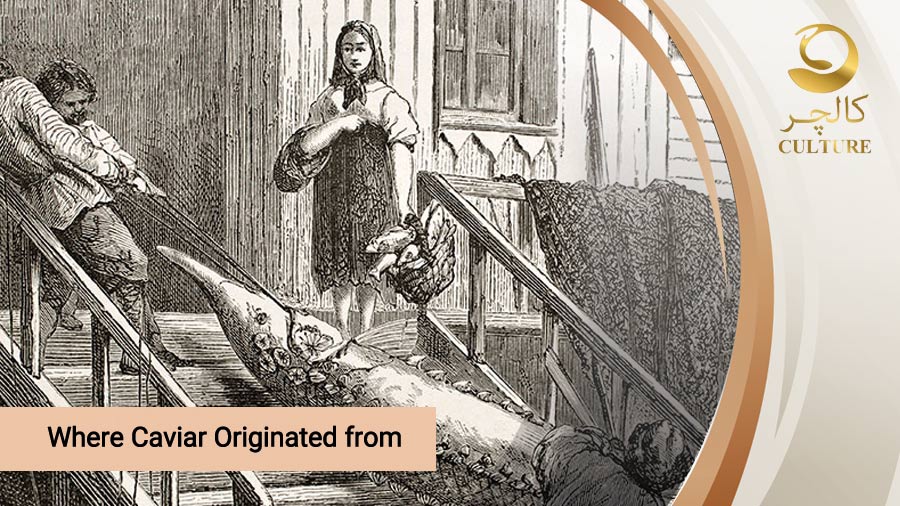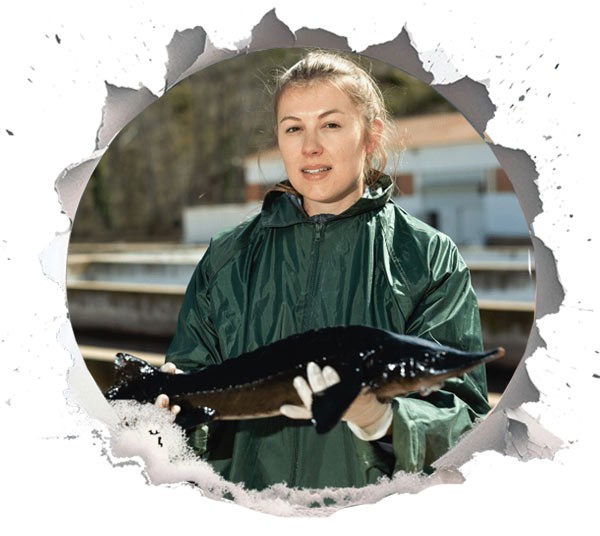Where Caviar Originated from: The History of Caviar

When we think of luxury foods that have tantalised taste buds for centuries, few items evoke the same sense of indulgence as caviar. This delicacy, with its distinctive taste and opulent reputation, has a history as rich and intricate as its flavour. Join us on a journey as we delve into the origins and history of caviar, tracing its path through time and culture.
The Origins of Caviar: A Glimpse Into History
Caviar, known as the salt-cured roe (eggs) of the sturgeon fish, holds a special place in gastronomy. This delicacy has a storied past that spans back through the ages, cherished by many as a symbol of luxury and refinement.
Ancient Origins
The history of caviar can be traced back to ancient times, when it was a delicacy revered by the elite classes, including royalty and nobility. The regions surrounding the Black and Caspian Seas emerged as hotspots for caviar production, with the Caspian Sea in particular gaining a reputation for yielding some of the most exquisite caviar in the world.
Persian Influence

Ancient Persia (modern-day Iran) played a pivotal role in the evolution of caviar consumption. The Persians were among the first to recognise the culinary potential of sturgeon roe, considering it a decadent delight worthy of kings and rulers. They developed methods to salt and cure the roe, not only preserving it for extended periods but also intensifying its flavour profile, thus laying the foundation for the esteemed tradition of Iranian Caviar.
Spread of Caviar Culture
Over time, the allure of caviar transcended borders, spreading its influence across Europe and beyond. The tradition of consuming fish roe, particularly from sturgeon, captivated the palates of the aristocracy and elite circles, becoming synonymous with sophistication and taste.
Legacy and Influence
The legacy of caviar as a culinary treasure continues to endure, with its roots firmly planted in ancient practices that celebrated the essence of luxury and indulgence. The journey of caviar from a delicacy reserved for the privileged few to a globally appreciated luxury item is a testament to its enduring appeal and cultural significance.
In essence, the history of caviar not only reflects the evolution of gastronomic preferences but also serves as a window into the opulence and refinement of past civilizations, where the consumption of this exquisite delicacy symbolised wealth, status, and culinary excellence.
The Golden Age of Caviar: History From Russia to the World

The 19th century marked a pivotal era in the history of caviar, with Russia emerging as a dominant player in the global caviar trade. This newfound prominence was largely attributed to Russia’s strategic access to the abundant sturgeon populations thriving in the waters of the Caspian Sea, a region renowned for producing some of the finest caviar in the world.
The History of Beluga Sturgeon and Russian Caviar
Russian caviar, particularly sourced from the Beluga sturgeon, garnered widespread acclaim for its exceptional quality. The Beluga sturgeon, known for its large, pearlescent eggs and sumptuous, buttery flavour, became synonymous with luxury and indulgence. This luxurious variety of caviar quickly captured the attention of connoisseurs both within Russia and on the international stage.
Caviar as a Symbol of Status and Refinement
As Russian caviar, with its exquisite taste and opulent reputation, gained popularity, it evolved into a symbol of wealth and prestige. The consumption of caviar transcended mere culinary appreciation to become a statement of refinement and sophistication, gracing the tables of royal courts, aristocratic households, and elite gatherings.
Global Demand and Lucrative Trade Routes
The soaring demand for Russian caviar during this period led to the establishment of extensive and lucrative trade networks that stretched across continents. Russian caviar became a coveted commodity, sought after by discerning consumers far beyond the borders of Russia. The art of caviar production and trade flourished, with the prized delicacy finding its way to exclusive dining tables worldwide.
Legacy of Russian Caviar
The legacy of Russian caviar’s dominance in the 19th century endures as a testament to the allure and desirability of this esteemed delicacy. The era not only solidified Russia’s reputation as a caviar powerhouse but also shaped the perception of caviar as a luxurious indulgence reserved for the elite.
Caviar Today: A Blend of Tradition and Innovation
In the modern era, the production and consumption of caviar have evolved significantly. Due to overfishing and environmental concerns, wild sturgeon populations have dwindled, prompting efforts to regulate and sustain caviar production.
Sustainable aquaculture practices have emerged as a viable solution, enabling caviar to be produced through responsible farming methods. This shift has not only helped preserve sturgeon populations but has also made caviar more accessible to a wider audience.
Tips for Enjoying Caviar: A Guide for Connoisseurs
For those looking to savour the exquisite taste of caviar, here are some tips to enhance your experience:
- Selection: Choose caviar from reputable sources that prioritise quality and sustainability.
- Storage: Keep caviar chilled but not frozen to maintain its freshness and flavour.
- Serving: Serve caviar on a bed of ice to preserve its texture and taste, accompanied by traditional pairings like blinis, sour cream, and champagne.
- Appreciation: Take time to savour each bite, allowing the flavours to unfold on your palate.
By following these tips, you can elevate your caviar experience and truly appreciate this culinary masterpiece.
Conclusion
In conclusion, the history of caviar is a testament to the enduring allure of this gastronomic gem. From its regal origins in ancient Persia to its modern-day evolution, caviar continues to captivate and inspire food enthusiasts around the world.
As we celebrate the legacy of caviar, let us also embrace the responsibility of preserving its legacy for future generations. By understanding and honouring the history of caviar, we can ensure that this esteemed delicacy remains a symbol of luxury and refinement for years to come.

